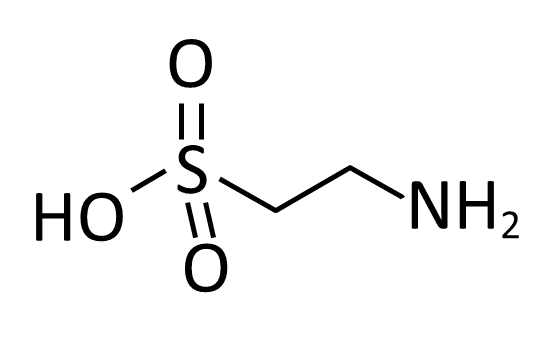TMJ Blog 12; uploaded 14 May 2023.
Taurine, an organic amino sulphonic acid* (2-aminoethanesulphonic acid; Fig 1), is present in animals but not plants and is thought to have a role in neonatal and infant development, especially of the neurological system.1 Observational data suggest that relative taurine deficiency during the neonatal period is associated with adverse long-term neurodevelopmental outcomes in preterm infants.2 Because the placenta and newborn livers lack γ-cystathionase required for taurine synthesis2,3 and immature renal tubular reabsorption causes loss of taurine in the urine,4 unborn babies and breast-fed neonates receive taurine from the mother. We address here the question of whether supply of taurine from vegan mothers represents a hazard for the neonate and infant.

Taurine depletion has been observed in very low birth weight babies receiving total parenteral nutrition.5 During pregnancy, vegan mothers can be deficient in vitamins B12 and D, iron, iodine, zinc, and omega-3 fatty acids, though a well-balanced vegan diet (that is, one in which the metabolites at risk of deficiency are supplemented) is reputed to be safe.6 Mana and Sanders measured taurine in the diet, blood, urine and breast milk of 14 vegan mothers and compared the values with those from age-matched omnivore controls.7 Also measured were vitamins D and B12, amongst others. Taurine was undetectable in the vegan diet but was present in breast milk at a mean concentration of 35 mg/L (277 µmol/L) compared to 54 mg/L (427 µmol/L) in omnivore mothers respectively. Plasma taurine was similar (66 and 76 µmol/L). Infant milk formula has taurine added and this represents an additional source of neonatal supply in breast feeding vegan mothers who occasionally elect to provide formula. It is possible that the taurine supply in vegans when breast feeding without use of formula is in fact adequate for normal development, but several currently missing pieces of information would add desirable substance to this possibility. These are: measurements of plasma taurine in vegan neonates (difficult to obtain in practice), systematic observations of neurological development in such infants, and the time course of maturity of enzymes that participate in taurine biosynthesis. Renal structure and function mature only slowly throughout childhood and may not contribute to conservation of taurine by tubular reabsorption for several years.4
While not directly answering the question posed here, more recent work underlines the importance of adequate diet in mothers and children even to pre-school age. Hovinen et al compared a complex range of vitamins and other nutritionally significant compounds in children from the same playgroups (3-4 years old) who had omnivore, vegetarian or vegan diets.8 Significant variation was found in many compounds: vitamins A, D, and folate, zinc and iron were normal, but HDL and LDL cholesterol were “strikingly low”, as was taurine measured indirectly as reduced conjugation of taurine to bile acids, plus other notable differences in bile acid secretion. The reduced taurine conjugation may have been secondary to altered bile acid metabolism rather than low availability of taurine. The work suggests that vegan-associated nutritional deficiencies in general and of taurine in particular may be present in vegan preschoolers, implying detriment at an earlier stage of development and indicating a potential problem in its own right.
The available circumstantial evidence does not permit a definite conclusion over whether reduced maternal supply of taurine in vegan breast milk is inadequate for normal neonatal development. Under these circumstances, empirical taurine supplementation, perhaps at reduced rate compared to formula milk (since vegan breast milk contains about half the normal value) appears worthy of further consideration unless formula milk is used.
*Taurine is often described as an amino acid, but as this term is generally used to describe α-amino-carboxylic acids. It is misleading for a compound in which the acidic component is not a carboxyl group and the amino group is on the β-carbon atom (see Fig. 1).
References
- Chesney RW, Helms RA, Christensen M, Budreau AM, Han X, Sturman JA. An updated view of the value of taurine in infant nutrition. Advances in Pediatrics 1998; 40: 179-200.
- Sturman J A, Hayes KC. The biology of taurine in nutrition and development. Advances in Nutritional Research 1980; 3: 231-299
- Stipanuk MH. Role of the liver in regulation of body cysteine and taurine levels: a brief review. Neurochem Res 2004; 29: 105-10.
- Aizman RI. Age Transformations of the Kidneys Structure and Function. Hlth Ed & Pub Hlth 2019, 2: 195-198. DOI 10.31488 /heph.123
- Zelikovi MDI et al. Taurine depletion in very low birth weight infants receiving prolonged total parenteral nutrition: Role of renal immaturity. J Paed 1990; 116: 301-306.
- Miedziaszczyk M, Ciabach P, Grześkowiak E, Szałek E. The Safety of a Vegan Diet During Pregnancy (Bezpieczeństwo diety wegańskiej podczas ciąży). Postepy Hig Med Dosw (Adv Hygiene Exper Med) 2021; 75: 417-425. DOI 10.5604/01.3001.0014.9343.
- Rana SK, Sanders TAB. Taurine concentrations in the diet, plasma, urine and breast milk of vegans compared with omnivores. Br J Nutrition 1986; 56: 17-27. Available at https://www.cambridge.org/core/services/aop-cambridge-core/content/view/57EF109C7DCF9067E72C751B6F6D8874/S0007114586000831a.pdf/div-class-title-taurine-concentrations-in-the-diet-plasma-urine-and-breast-milk-of-vegans-compared-with-omnivores-div.pdf.
- Hovinen T, Korkalo L, Freese R, Skaffari E, Isohanni P et al. Vegan diet in young children remodels metabolism and challenges the statuses of essential nutrients. EMBO Mol Med 2021; 13: e13492. DOI 10.15252/emmm.202013492.
J A Millar
Editor, Tasman Medical Journal
